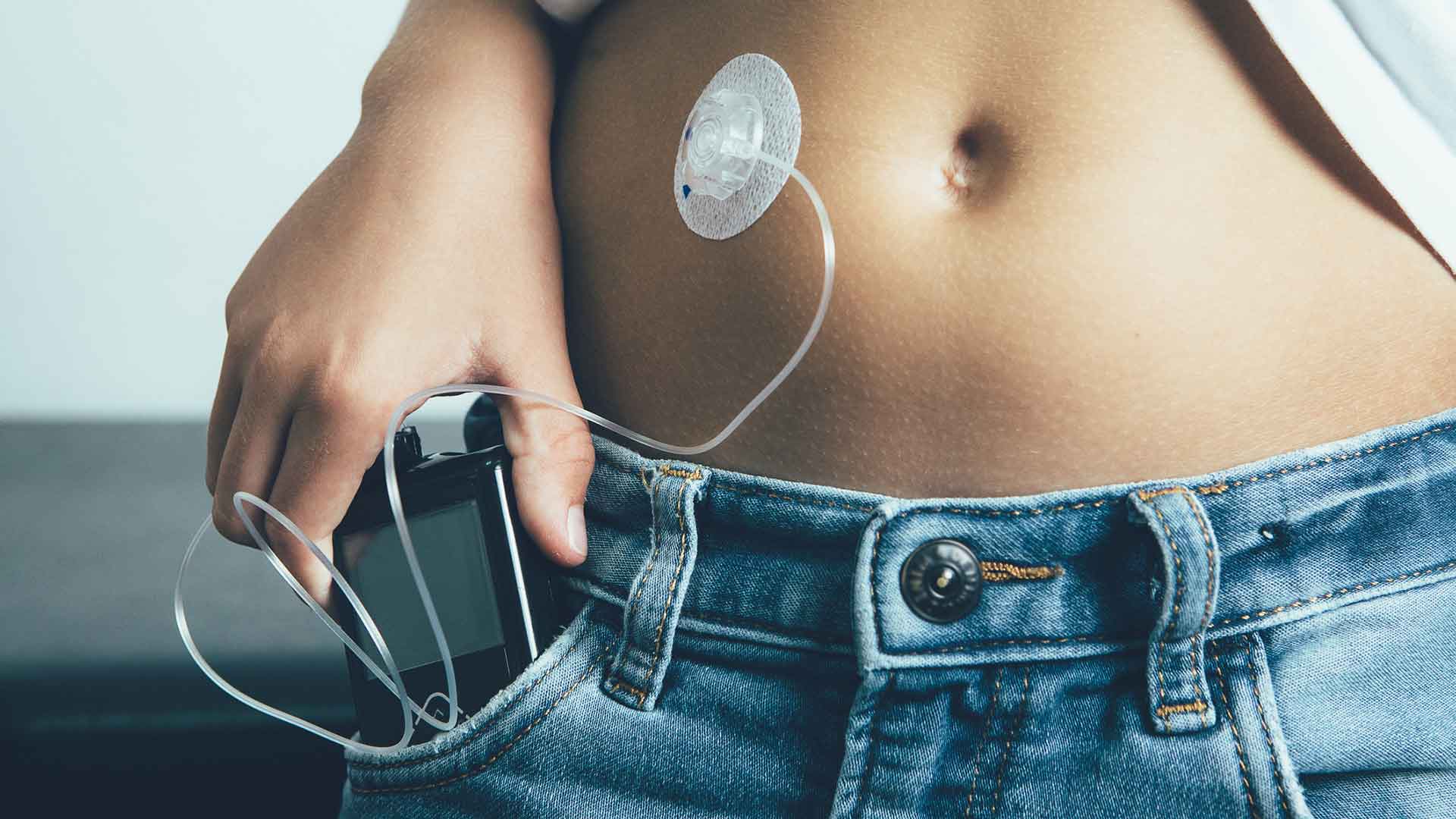Diabetes is a life-changing condition not only for those diagnosed with it but for those close to them as well.
As parents of children with diabetes, few things are as hard as helping our kids manage diabetes.
Insulin delivery, in particular, can be especially challenging. From knowing how much insulin to give and when, to calculating how much you have left in your system – there are a lot of variables that make it difficult for a child to manage diabetes on their own.
As parents, we may not always be around to help. Luckily, that’s exactly where insulin pumps come in.
Insulin pumps work somewhat autonomously, which makes them a great option for kids with diabetes or parents of young diabetics – you don’t have to worry as much about your child knowing how to properly dose and administer an insulin shot on their own.
In this article, we’ll talk about how you can use insulin pumps to manage your child’s diabetes and some of the most commonly used pumps in 2022.
What Are Insulin Pumps
An insulin pump is a small computer-controlled device programmed to deliver insulin into the body when needed. They’re worn outside the body, and just like regular insulin shots, most pumps subcutaneously pass insulin into the body through a needle attached to a tube (cannula) that’s connected to the pump.
With these pumps, you end the need for insulin pens or shots because you can schedule insulin delivery from an app connected to the pump, no matter where you are. For this reason, you don’t need to worry about your child forgetting or not being able to inject the insulin themselves.
How Do Insulin Pumps Work
There are different types of insulin pumps, and each works differently.
All of them aid in the delivery of insulin into the body and may serve as a replacement for insulin shots.
Regardless of the pump you choose, you’ll need to set the basal (the “background” insulin) amount that keeps your child’s blood sugar in range, and then the device delivers insulin based on that, even during inactivity/sleep. You can bolus insulin to cover meals, snacks, and corrections from high blood sugar levels either automatically (if it’s a closed-loop system) or manually (if it’s an open-loop system). More on that later.
You can also modify the basal insulin delivery depending on certain factors. For example, when your kid is exercising or playing sports, you can reduce the insulin delivery.
How Long Do Insulin Pumps Last?
Insulin pumps are highly durable devices. A typical pump can serve your kid for more than five years, even up to eight years. However, you will need to refill the pumps with insulin and change infusion sites every two to three days to allow a continuous, stable supply of insulin into the body.
The battery lifespan typically extends from about 7 to 10 days. However, you should note that things like backlight, vibration mode, and other features can drain the battery faster.
For this reason, you’ll want to keep track of the battery life of whatever device is controlling your child’s pump to ensure that they’re continually getting their proper dosage.
What Types of Insulin Pumps Are There?
There are different types of insulin pumps for effective diabetes management. But we will focus on the two most common ones: patch and tethered pumps.
Patch Pumps
These pumps are smaller than conventional pumps and directly attach to the skin with a small adhesive. Insulin patch pumps don’t require an elaborate tubing system.

Instead, the insulin is delivered through a tiny cannula that goes directly from the pump into the skin.
Tethered Pumps
Tethered pumps deliver insulin under the skin through the infusion set (a cannula and a needle).

This means that a tube ending in a needle connects the pump to your child’s skin for a constant supply of insulin. Your kid then carries the pump in a bag, attaches it to a belt loop, or puts it in their pocket.
Of course, both types of pumps are suitable for children with type 1 diabetes.
However, patch pumps might be better suited because they allow children to play with their friends without having to worry about a tube or carrying a device in their pockets.
It just requires the parent to change the needle and infusion sites every two to three days and set up the dosage system.
Closed or Open Loop Insulin Pumps?
You may have heard of closed or open-loop insulin pumps. These terms relate to the way the pump works.
With closed-loop pumps, the pump connects directly with your kid’s Continuous Glucose Monitor (CGM) (if they have one) to deliver insulin automatically based on their blood glucose levels. Essentially, these pumps work like an artificial pancreas.
Despite being fully automated, you still have full control over it and can adjust the insulin levels at will, like after a meal, for example, to avoid spikes in blood sugar levels.
Both patch and tethered pumps can be closed-loop.
Open-loop insulin pumps, on the other hand, don’t connect to a CGM. You’ll need to set insulin delivery yourself, as your kid’s blood sugar levels vary throughout the day.
Best Insulin Pumps for Kids
There are different brands of insulin pumps on the market, but we’ve included the most popular ones for kids as of November 2022, when this article was last updated.
Omnipod 5

Omnipod 5 is one of the best patch insulin pumps. Children as young as two years old can use it.
You can pair Omnipod 5 with the Dexcom G6 CGM and integrate both these devices with the Gluroo app on your smartphone to help monitor blood glucose readings, automate insulin delivery into the body, and much more.
You can easily attach this pump to any site where you would normally inject insulin. The Omnipod 5 runs an automated system (“closed-loop”) that adjusts insulin delivery every five minutes, depending on blood sugar levels.
Like a typical patch system, you must change the needle and infusion site every three days.
One of the best features of the Omnipod 5 is that it’s a waterproof insulin pump, meaning that your child can wear it while swimming or showering.
Omnipod Dash

Omnipod DASH is another patch-based automated insulin delivery system.
Like Omnipod 5, it requires less calculation of insulin doses (compared to using insulin pens, vials, or open-loop systems) and integrates with an app that serves as your diabetes manager, like Gluroo. The pump seamlessly delivers insulin into your child’s body when necessary, with no interruption.
It can hold up to 200 units of insulin, which will sustain your kid for around three days before changing it.
Tandem T-Slim x2

This insulin pump is super-slim, about 38 percent smaller than other pumps on the market. It can be an excellent option for your child, as they won’t feel like they’re carrying extra weight.
Despite its smaller size, it holds up to 300 units of insulin, which is enough to keep your kid’s blood sugar in check until you have to change the infusion site.
The Tandem T-Slim x2 is also waterproof, which means easy and uninterrupted insulin delivery even during unfavorable conditions. Like other pumps mentioned previously, it pairs well with Dexcom G6 CGM for automated insulin delivery and can integrate with Gluroo for easier diabetes management.
Pros and Cons of An Insulin Pump
This section will discuss the advantages and disadvantages of insulin pumps for your kid with diabetes.
Pros
- Allows you to set a specific dosage rate of insulin over time, and you may adjust it depending on activity.
- If it’s closed-loop, the device mimics the pancreas by automatically delivering a constant supply of insulin into the body.
- It prevents the need to use insulin shots regularly.
- Worry less about hypoglycemia. A closed-loop pump can reduce insulin being sent to the body if it notices that your child has low blood sugar (or will have low blood sugar soon).
- It’s flexible because it allows you to change insulin levels depending on your child’s needs. We all know these needs can be affected by the time of day or activities such as exercise and sleep.
- The device stores valuable data that may provide your doctor with info regarding diabetes management.
Cons
- It may irritate the skin.
- The devices can be expensive – up to $5,000 or more without insurance.
- During exercise or certain circumstances, insulin pumps may fall off. The tubes of tethered pumps may get blocked, preventing insulin delivery into the body.
- It’s unlikely, but the tech may fail or experience glitches that may be dangerous, especially if there is no backup. There is also the case if the battery dies on the device that controls the pump.
How Can I Get an Insulin Pump for My Kid
To get an insulin pump for your child, you’ll need to work hand in hand with their doctor. The doctor will first have to determine if an insulin pump is the best form of therapy for your child.
Once you and the doctor have agreed to switch your child’s insulin therapy to a pump delivery system, the doctor will refer your kid to the hospital’s insulin pump program. There, you and your child will learn how to transition and manage their diabetes using insulin pumps.
So Should You Get an Insulin Pump for Your Child?
Insulin pumps are very effective for type 1 diabetes management, and they’re especially handy when it comes to kids.
Whether you opt for a patch or tethered, closed or open loop, an insulin pump significantly improves the process of insulin delivery. It allows you to not worry so much about your kid getting the insulin they need.
Remember to speak to your child’s doctor before making the switch to the pump. They’ll tell you which type of insulin delivery system is best for your kid and help set you up with the right pump if that’s the case.
Regardless, it’s good to know what options there are for your child. We hope this article was able to help you get a clearer understanding of insulin pumps.
If you’re looking to make your kid’s diabetes management even easier, check out Gluroo! It’s a collaborative diabetes management app that allows for multiple caretakers to be involved in managing your child’s diabetes.






